In 2015 Barbara and I went to Brazil to visit old friends in Brasilia followed by a Field Guides sponsored birding trip to Garden of the Amazon north of Cuiaba, and to the Pantanal, south of Cuiaba, both in the state of Mato Grosso. My report on that trip can be found in this Blog, in 2 segments, published in September and October, 2015.
In August, 2018 I went back to Brazil for a shorter birding outing with Rockjumper Bird Tours at the famous Cristalino Lodge, in the southern part of the Amazon Rain Forest, in and very close to the northern border of the state of Mato Grosso. My primary target bird for this trip was the Dark-winged Trumpeter, one of three species in the Trumpeter (Psophiadae) family, a family I had never seen and which can be found only in the Amazonia area of South America.
At Cristalino I joined a group of 6 other birders who had participated in 2 earlier segments of this Rockjumper trip, one to the Pantanal and one to Iguaszu Falls. They welcomed me warmly to their group and the week with them and with our Rockjumper leader, Rob Williams, could not have been more enjoyable. [Side note: the bartender at Cristalino makes a good Tanqueray and Tonic].
Cristalino Lodge is located on the banks of the dark water, Cristalino River. I was surprised at the paucity of bothersome insects, such as mosquitoes, chiggers, ticks, flies, etc. I had come prepared with malaria pills, treated long shirts and pants, and plenty of insecticide, but I am pretty sure none of it would have been necessary, at least at this time of year, just before the wet season sets in. I was told that mosquitoes, in particular, do not habituate well to dark water rivers because of the tannins contained in them. True or not, their absence was a welcome surprise. Also surprising was the nonchalance of the swimmers (most of the tour participants) who cooled off in the river every day. I did not, maybe because I could not quite get past the thought of the possibility that the Caiman (siblings to the alligators, but just a cousin to the crocodiles) that we had seen along the river bank not far away, might wander into the swimming area.
The Lodge is very nice, the accommodations spacious and clean, the fans keep them comfortably cool, and the food, served buffet style at the central lodge, was exceptional. A crew of hired guides works for the Lodge and I was pleased at the efforts Rob made to connect me with one of them for one day of dedicated, though unsuccessful, search for the Trumpeter, while the others took a trip down river on the boat. In the category of small world, my lodge supplied guide is a native of Burlington, Iowa.
At Cristalino one can, and we did, walk the jungle trails, climb to the tops of canopy towers, hike to a secret “garden” and a rocky outcrop, sit quietly by a hide as the day darkened, and, my favorite, sit back in a comfortable boat for a birding trip on the dark water river.
It was in the evening while sitting quietly by a hide as birds came to bathe in the tiny water hole, that this Giant Anteater walked close to us, apparently oblivious of its human observers.
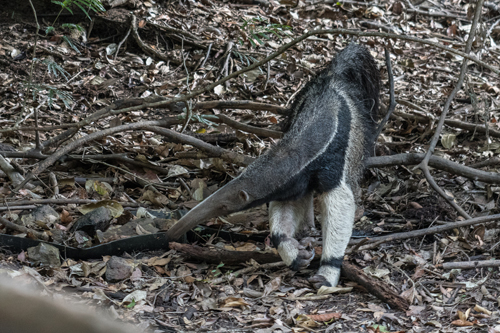
And it was during the course of our daily river trips that we saw Lowland Tapirs
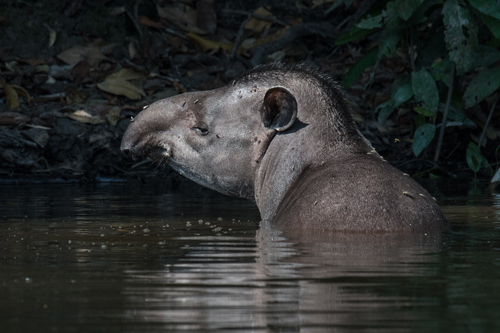
And on our final trip leaving Cristalino, a trio of Giant Otters, fishing casually along the shore and then launching themselves onto a fallen tree trunk over the water, to digest and warm up in the sun.

But wait a minute, wasn’t this supposed to be a birding trip? Yes, indeed, and the birds were plentiful, but in the Amazon the animal life is spectacular also. In addition to the mammals pictured above, during the course of the week we saw or heard Tufted Capuchin monkeys, Red-handed Howler Monkeys, White-cheeked Spider Monkeys,
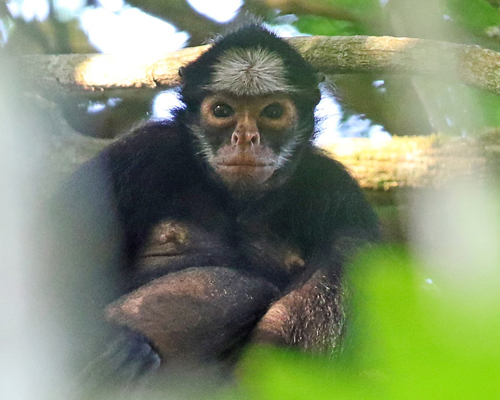
Capybaras, Spotted Pacas, Azara’s Agoutis, Brazilian Porcupine, Proboscis Bats, Greater Sac-winged Bats, Fishing Bats (Greater Bulldogs), Geoffroy’s Side-necked Turtles, Spectacled, Dwarf (Curvier’s) and Black Caiman, Running Lizards and a Tree Boa.
So now to the birds: We had 5 full days of birding with no Trumpeter. On the last day we had a very short morning available for a concentrated effort by all to find some Trumpeters. With time running out on my effort to add this family to my life list, Rob suddenly asked for complete silence as he cupped his ear to the distant sound of—what–? Trumpeters in the jungle undergrowth. The first sign we had had all week. With luck he might call them near the trail. And luck we had. Soon, one, two, three, four, five Trumpeters showed up on the trail (behind us), and put on a 3-4 minute show for us all.
Alisdair Hunter of Ottawa captured the moment. With his permission, I include here his photographs of our Dark-winged Trumpeters.
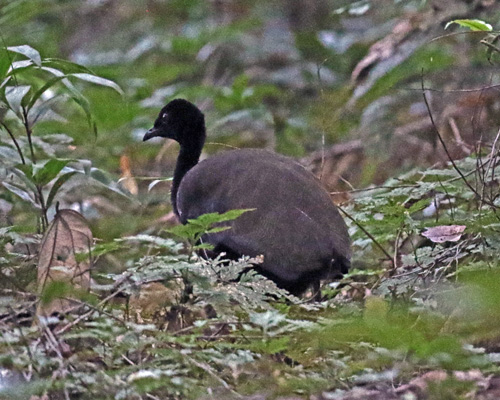

You can also Google “Dark-winged Trumpeter” at Cornell’s Lab of Ornithology, “Multimedia/Neotropical Birds on Line” where you can see many images of this most interesting bird, and also hear the unusual calls and moans of these noisy characters, made as they cover great swaths of territory in the jungle undergrowth.
So with the Trumpeter family added to my list, I now have 215 of the current Clement’s List of 250 Avian families. More families are being created every year due to DNA sequencing and the resulting reclassification that is in process. When the Clements World List was last published as a hard bound volume in 2007, which was about when I started keeping track of families, there were 203 of them. From 203 families in 2007 to 250 in 2018 is a rapid expansion. As for my species count, at Cristalino it increased by a modest 54 to a total of 3,708.
Following are some of the more interesting birds we saw at or near Cristalino. All of the following photos are by Alasdair Hunter, one of the participants in the tour, and are included here with his permission:
Curl-crested Aracari
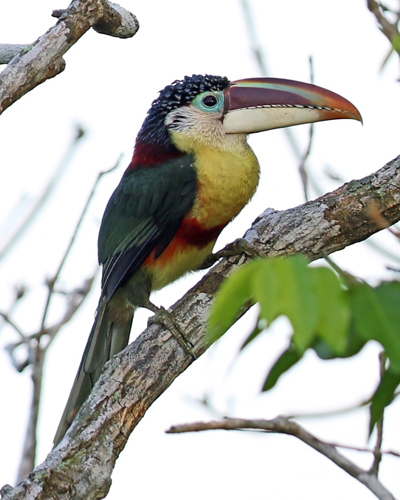
Bare-faced Currassow (female)
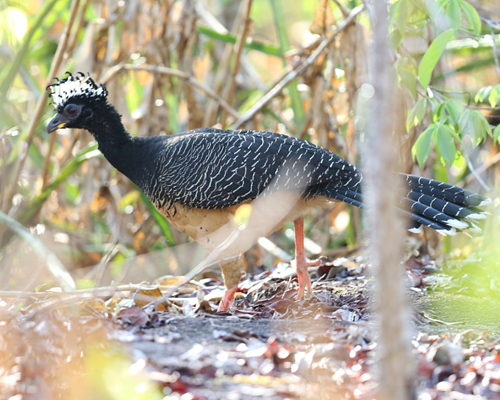
Red-throated Piping Guan
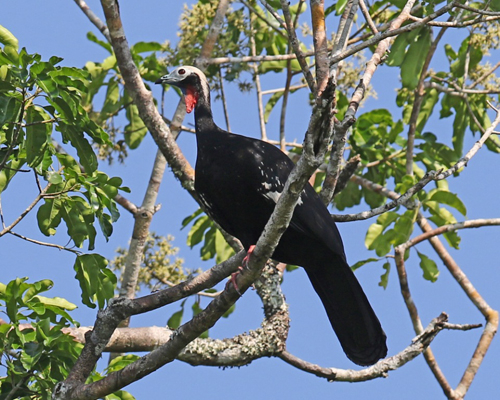
Ornate Hawk-eagle
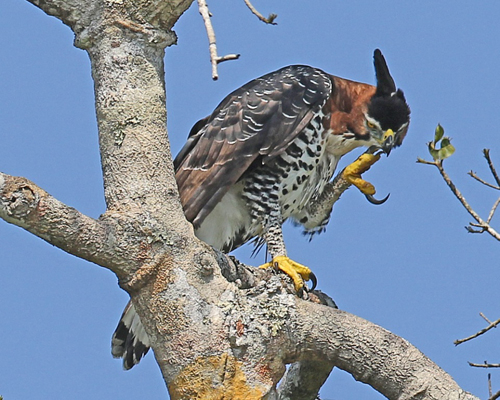
Agami Heron
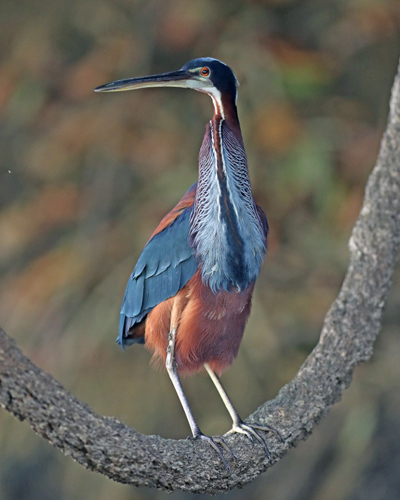
Hoatzin

Blue and Yellow Macaws
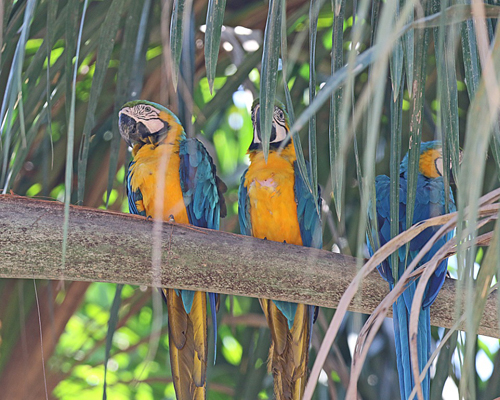
Point-tailed Palmcreeper
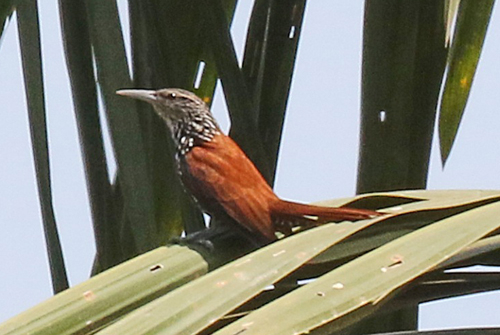
Crimson-bellied Parakeets
]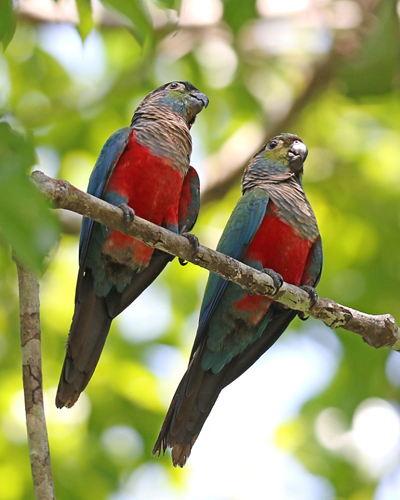
Sunbittern
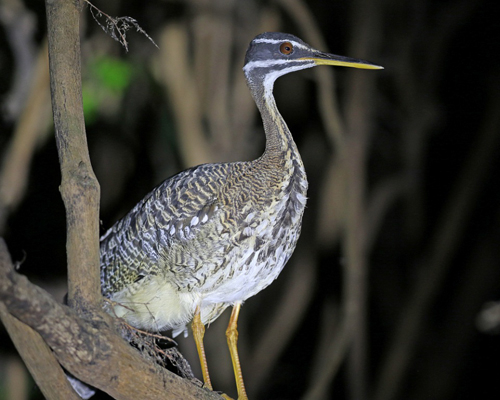
Blue-necked Tanager
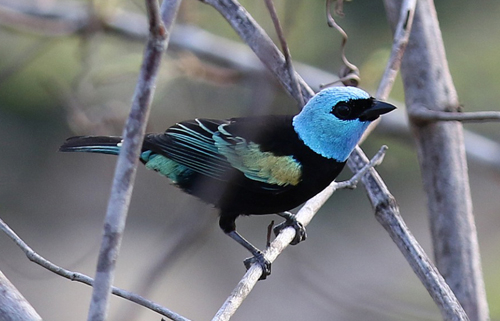
White-throated Toucan

Capuchin Monkey

My next international trip will be to the Dominican Republic in March, 2019. Within this relatively small country it is possible for me to add 5 families, a personal gold mine, as the number of new families available to me, especially in the western hemisphere, dwindle. The 5 new (to me) Dominican Republic families are: Tody (2 species, Broad-billed and Narrow-billed Tody), Palmchat (Dulus Dominicus), Hispaniolan Spindalis, Black-crowned Palm-Tanager, and Chat-Tanager (2 species, Eastern and Western). Assuming 100% success, which seems likely based on prior tour reports, that will leave only 4 families unseen (by me) in the western hemisphere: Sapayoa, missed due to safety concerns in my recent trip to Ecuador; Sharpbill, reliable only in southeast Brazil, Cuban Warblers, (2 species), and Puerto Rican Tanager. Whether or not I will try for any of them remains to be determined.
